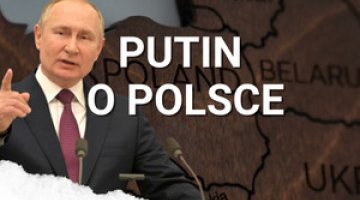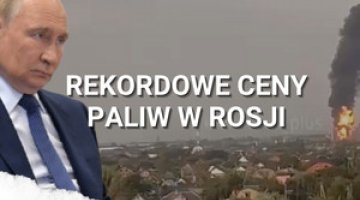Successful prisoner exchange. 211th day of war

On 22 September, 215 soldiers fighting on the Ukrainian side (including 108 from the Azov regiment) were exchanged for Viktor Medvedchuk – a pro-Russian politician with close personal ties to Vladimir Putin – and 55 Russian soldiers. According to the agreement, five senior Azov officers were handed over to Turkey, covered by President Recep Tayyip Erdoğan’s security guarantees and cannot return to Ukraine until the war’s end. Ten foreigners fighting in the ranks of the Ukrainian army (five citizens of the UK, two of the US and – one each of Morocco, Croatia and Sweden), freed with the mediation of Saudi Arabia, were transported to the United Arab Emirates. The head of Ukrainian military intelligence, Kyrylo Budanov, who was responsible for organising the exchange, announced that efforts were underway to liberate more captives. Since the beginning of the invasion of Ukraine, 802 of the country’s citizens have returned from captivity.
The fighting in the Donbas has focused on several directions – Bakhmut, Siversk, Marinka and Lyman. In most cases, Russian forces are the advancing side, and in the last one, Ukrainian forces. Neither side, however, has achieved any evident success. The invaders also made unsuccessful assaults in the Kharkiv Oblast, in the Kupiansk junction area.
The shelling and bombardment of Ukrainian forces’ positions and hinterland along the contact line and in the border areas of Sumy and Chernihiv oblasts continued unabated. Russian artillery and aviation consistently attacked Kharkiv, Sloviansk, Kramatorsk, Zaporizhzhia (the city was also one of the main targets of Russian rocket fire for the next few days), Nikopol, Mykolaiv (local observers described the hit on the city on 22 September as powerful) and Ochakiv, as well as smaller towns in their vicinity. The aggressor’s rockets again struck the Pechenihy Reservoir dam on Donets. Ukrainian artillery and aviation mainly attacked the enemy’s positions and hinterland in the Kherson Oblast, including the Kakhovka bridge, which its forces were supposed to cross at the time. It also struck in the Luhansk Oblast. Both sides accuse each other of shelling occupied Donetsk, with further explosions reported from Melitopol.
The announcement of partial mobilisation in Russia has become an internal security challenge for the authorities. The Kremlin fears a rise in anti-war sentiment and the radicalisation of the actions of those opposed to conscription. Defence Minister Sergei Shoigu stressed that among the priority tasks of mobilisation is to strengthen the security of military commissions and places of ‘public gatherings’. This, he added, was to thwart possible provocations disrupting the process.
The local authorities who manage the mobilisation process, offer a financial incentive to implement the plan. Moscow mayor Sergei Sobyanin signed a decree on additional social guarantees for mobilised residents of the capital. They will receive a monthly subsidy of 50,000 roubles (more than $800). Labour migrants who have undertaken contractual service in the army will obtain a similar benefit. Similar support was announced by the ‘chief’ of occupied Crimea, Sergei Aksyonov, who offered each mobilised person a one-off payment of 200,000 roubles (over $3,000), while the governor of the Tula Oblast – a one-off payment of 100,000 roubles (over $1,500). The local authorities assure that if a mobilised person is wounded, they will be paid compensation (1 million roubles). In case of their death, their family will receive 2 million roubles (over $330,000).
To make it more difficult to evade mobilisation, Moscow turned to Belarus and Kazakhstan for help. Belarusian security forces have been ordered to detain and deport Russians in hiding. The head of Kazakhstan’s parliament announced that the country would not issue residence permits to Russian citizens who do not have the authorities’ permission to leave the country.
On 21 September, Moscow hosted a meeting between Russian Security Council Secretary Nikolai Patrushev and his Belarusian counterpart Alyaksandr Valfovich. They paid particular attention to the planning of joint ‘anti-terrorist’ activities. They also pointed out the risks posed by, among other things, the strengthening of the NATO military grouping near the borders of the two countries. Valfovich stated that no mobilisation would be announced in Belarus, as its armed forces and society are already sufficiently mobilised to repel possible aggression.
On 23 September, five-day ‘annexation referendums’ began in the so-called Donetsk and Luhansk People’s Republics (DPR and LPR) and the partially occupied Kherson and Zaporizhzhia oblasts. In the Zaporizhzhia Oblast, ‘for security reasons’, polling stations will only open on 27 September, with votes being collected in portable ballot boxes before then. Around 300 polling stations have been set up on Russian territory and in occupied Crimea, where displaced residents of the occupied territories can vote. The results of the ‘referendums’ were established even before the voting began – ‘polls’ published the day before indicated allegedly high support for joining Russia (DPR – 86%, LPR – 87%, Zaporizhzhia Oblast – 83%, Kherson Oblast – 72%). Due to the threat of increased shelling by the Ukrainian army and sabotage actions in the Kherson and Zaporizhzhia oblasts, polling stations are guarded by collaborator police and the Russian National Guard. Special control has been placed on the entrances to and exits from the settlements, and anti-terrorist exercises with heavy combat equipment are being conducted in the Melitopol area. The collaborationist authorities in Kherson admitted on 23 September that several ‘terrorist’ attacks had been foiled in the city, and the air defence system had been reinforced.
Commentary
• So far, the pseudo-referenda in the occupied territories have not affected the course of military action. It is not in Ukraine’s interest to halt military activity at this time – on the contrary, Kyiv will likely intensify it. However, the aggressor can be expected to reduce the offensive moves. The observed relative calm on the southern section of the front, however, is not linked to ‘plebiscites’. In the Kherson Oblast, the occupied patch of the Mykolaiv Oblast and Zaporizhzhia Oblast, Russian troops already went on the defensive in the spring. The offensive actions they periodically undertook in the area (sporadically in the Zaporizhzhia Oblast) were aimed at improving the tactical situation, reaching – as far as possible – the administrative borders of the Kherson Oblast and, especially in the last period, eliminating the breaches made by the enemy forces.
• The exchange of Medvedchuk for 215 soldiers fighting on the Ukrainian side, including the command staff of the Azov regiment, is a significant political success for Kyiv. Their release will reaffirm President Volodymyr Zelensky’s strong position while at the same time weakening his criticism from the opposition, which has accused him of the failure of the operation to surrender Mariupol. It also strengthens the status of Budanov, who took control of the exchange negotiations at the end of May. In Russia, on the other hand, the event fuelled criticism of the authorities from nationalist and radical circles. Until recently a show trial of the Azov fighters was planned in Russia to demonstrate the ‘necessity of denazification of Ukraine’ (the Russian Supreme Court had stripped them of their veterans’ rights, having declared the regiment a ‘terrorist formation’). The change in the Kremlin’s stance and the image price it is paying for the exchange indicates that the argument of Medvedchuk’s close relationship with Putin probably prevailed here. It can also be assumed that the 55 Russian soldiers included senior officers. Medvedchuk may be needed because of his knowledge of irregularities in the special services’ spending of funds intended for the operation to destabilise Ukraine. The Russian side anticipated that the release of the Azov fighters would raise controversy, so it planned the exchange for the day when Putin announced mobilisation.
• The smooth implementation of ‘partial mobilisation’ is a significant organisational challenge for Russia. The measures taken show that the authorities fear, among other things, an increase in evasion. They are offering special financial incentives for those mobilised, which shows that the level of readiness of Russians to participate in the war with Ukraine is low. Implementing the mobilisation plan will require a police operation and forced appearance at military commissions under threat of repression. In propaganda terms, therefore, it will be difficult to present its results as an example of a ‘patriotic uprising’ of the population.





